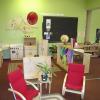- Teach staff members about developmentally appropriate environmental designs for learning.
- Model how to design effective environments and help staff brainstorm solutions.
- Observe and provide feedback on learning environments.
Learn
Teach
What messages do you want your environment to send? How do you want staff members, children, and families to feel while they are in your space? What do you want them to learn?
There are several things to keep in mind as you help staff design or redesign their classroom or program spaces. First, you should contribute your expertise on high-quality environments. You must know what a high-quality learning environment looks like for infants, toddlers, preschoolers, school-age children, and youth. You can read the age-specific Learning Environment courses for a review. These lessons stress the importance of the physical environment, how the environment sends messages to children, youth and adults about how to appropriately use the space, and how arrangement of the environment can hinder or facilitate staff’s work with children and families. The lessons include information on developing and communicating predictable schedules and routines. In addition, the lessons provide information on constructing indoor and outdoor environments that are:
- Designed to support the interests and development of children and youth, including information on relevant interest or activity areas that could be included based on child age
- Organized to support independence, easy use, and learning
- Full of materials that are developmentally appropriate, culturally relevant, open-ended (i.e., materials that can be used in a variety of ways), and that support a variety of learning goals for children or youth
- Simultaneously engaging, with interesting experiences, and calming with home-like attributes
- Supportive of all children and youth
You must also be able to communicate this information to staff members. This lesson will help you identify high-quality environments and provide suggestions for helping staff members continuously improve their learning environments. Although many staff members view the environment as an expression of their creativity and approach to teaching, you hold the ultimate responsibility for ensuring that environments are designed for learning.
Many staff members may need you to provide them with information about child development. Make sure staff members understand the unique needs of the age group with which they work:
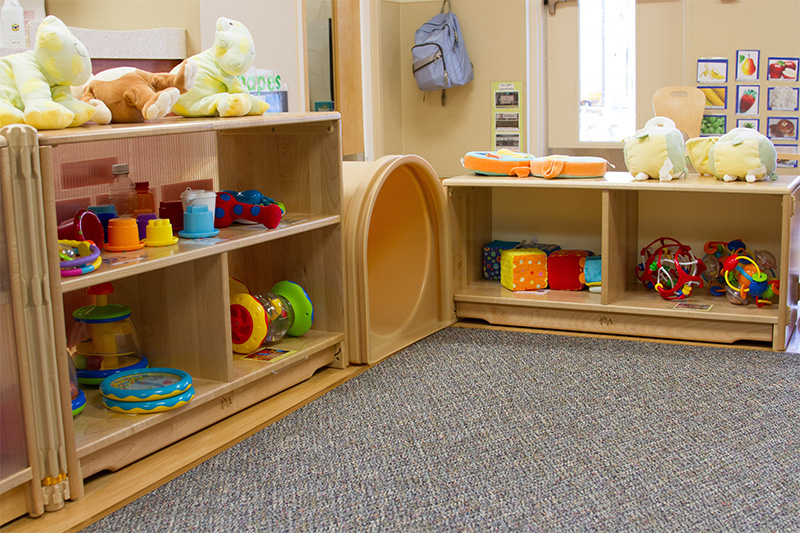 Infants use their senses to explore the world around them. The environment should be set up to encourage this exploration, but safety and supervision should be primary concerns. Infants can do a lot! As infants learn and grow, their needs change. After 6 months of age, children are ready to explore a bit more broadly.
Infants use their senses to explore the world around them. The environment should be set up to encourage this exploration, but safety and supervision should be primary concerns. Infants can do a lot! As infants learn and grow, their needs change. After 6 months of age, children are ready to explore a bit more broadly.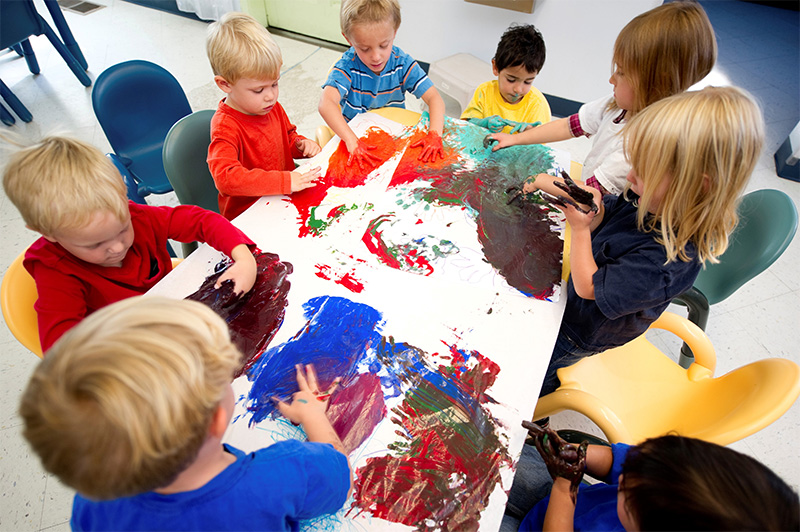 Toddlers are also explorers, but their new mobility has broadened the world of exploration possibilities. Toddlers take risks and test their own limits. The environment should maintain safety while allowing toddlers to practice their new independence.
Toddlers are also explorers, but their new mobility has broadened the world of exploration possibilities. Toddlers take risks and test their own limits. The environment should maintain safety while allowing toddlers to practice their new independence.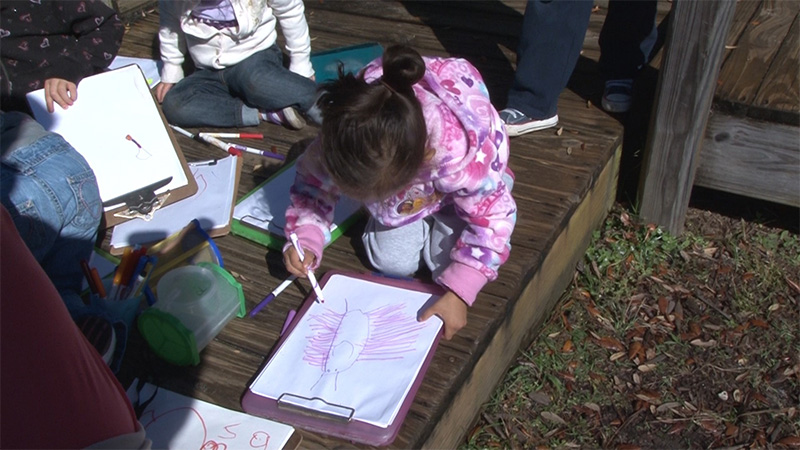 Preschoolers are making sense of the world around them. They are able to explore more independently, and they can move confidently and quickly. They need a variety of objects and settings to explore, manipulate, and create. The environment should spark their creativity, but it should also help them practice important independent skills, such as hand washing and dressing.
Preschoolers are making sense of the world around them. They are able to explore more independently, and they can move confidently and quickly. They need a variety of objects and settings to explore, manipulate, and create. The environment should spark their creativity, but it should also help them practice important independent skills, such as hand washing and dressing.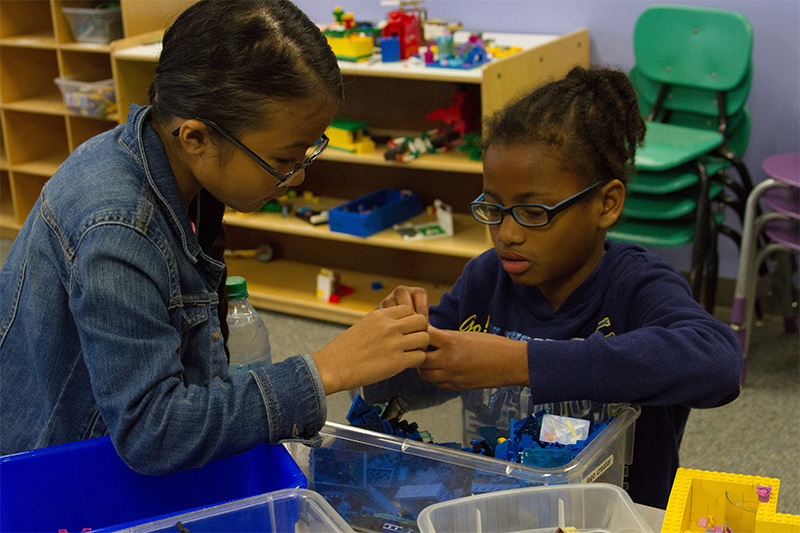 School-age children need many of the same experiences as preschoolers, but they are ready for more sophistication, independence, and challenge. The environment should allow them to identify peer groups, work alone or with others, and select materials and experiences that interest them.
School-age children need many of the same experiences as preschoolers, but they are ready for more sophistication, independence, and challenge. The environment should allow them to identify peer groups, work alone or with others, and select materials and experiences that interest them.
You must be prepared to teach staff members about the role the environment plays in the curriculum and in child behavior. Talk to staff members about how their environments are designed to support engagement and active learning. Also be prepared to encourage staff members to look at their environments first when challenging behaviors occur.
Model
You are the content specialist in your program, so it is your job to be a role model for effective practices. You should have an active role in designing environments. Help staff members arrange their spaces. As you do so, talk about why it is important to arrange environments in systematic ways (separating loud and quiet spaces, providing boundaries, etc.). Spend time talking about the space, sharing organization tips, and helping move furniture. Brainstorm together when problems arise. Model looking at the environment first when challenging behaviors occur. Ask questions like:
- What do you think this environment is communicating to the children or youth?
- What are your goals for this space?
- How do you think children or youth should use this space?
- Is it easy to do what needs to be done here? Why or why not? What would make it easier?
- What problems are children having? What messages do you think they are trying to send with their behavior?
Model curiosity and problem solving as you work with staff members. When a space needs to be arranged or rearranged, help staff members list all the activities, events, and materials that the space should accommodate. Use that list to set goals for the space and clearly define spaces that serve different functions. Also, keep open lines of communication among staff members who work different shifts in the same space. It is important that all staff members understand the purposes behind environmental arrangement.
Finally, work with your program's management to make sure that your program's shared spaces communicate the same messages as individual classrooms. Model a clean, clutter-free, and learning-focused approach to designing all spaces in your program. This means the front desk, staff break areas, and training rooms are all arranged with learning in mind.
Observe
It is your responsibility to ensure that staff members provide high-quality, engaging environments. As with safety, your program may have tools to evaluate the quality of indoor and outdoor environments. Several environmental rating scales are commercially available (ITERS-R, ECERS-R, SACERS). You can also use the National Association for the Education of Young Children environment standards or other tools developed for school-age programs. These tools can provide valuable information to help focus a staff member's professional development around the learning environments and materials they provide.
Observing and talking with staff members are the best means for assessing the strengths and meeting the challenges of their learning environments. It is important for you to know each staff member's individual strengths and challenges. Remember, you may also need to support consistency across different shifts among staff members who work in the same classroom.
Let's begin by taking another look at a classroom that you first were introduced to in the Safety Course. Making simple improvements to an environment often can have a major impact on the overall classroom experience — including safety and learning. You've already watched this video and thought about the safety implications. Now, take some time to think about how this space affects learning.
Case Example 1: Learning Environment
Case Example Step 1: Make a Plan
What did you notice about this environment? Did it maximize opportunities for learning? Did it provide a strong foundation for the curriculum? As a trainer or coach, it is your responsibility to provide supports so the answers to the last two questions are “Yes!” Think about what specific strategies a trainer, coach, and classroom team might discuss to help maximize learning in this environment. In the Safety Course, the trainer, coach, and teachers discussed creating “zones” for easy supervision, developing a role-by-responsibility matrix so adults knew what to do at all times in each zone, and taking data on “hot spots” in the classroom. These same steps can be powerful ways to promote learning. In this case, we would begin to provide the staff members with some rationale for why and how zones and active supervision promote learning. Here is an example of the simple way a goal about the classroom environment can include learning outcomes:
Goal: to provide a safe environment that promotes development and learning for all toddlers.
Steps to reach the goal:
- Gather sample classroom designs from our curriculum guides and online. Identify strengths and weaknesses for our space. Person responsible and timeline: Michael (the coach) will complete and bring back to classroom team by next Tuesday.
- Organize the classroom into learning "zones." Make sure zones are clearly defined, large open spaces are broken up, and children and adults know what to do in each zone. Person responsible and timeline: Team will organize during Oct. 25 meeting time.
- Include each zone in the weekly lesson plan, so learning activities are provided. Person responsible and timeline: Joanne and Marley (teachers) will begin immediately.
- Continue taking data to identify "hot spots." Person responsible and timeline: Michael, ongoing.
Case Example Step 2: Provide Feedback
It’s important to talk to staff members about their environments. When staff members perceive challenging behavior, it is helpful to consider the environment first. In this case example, the trainer or coach might say something like:
- "I noticed that the transition after breakfast seemed especially difficult today. In a perfect world, what would you want to have happen during that time?"
- "It's so important to think about how our environments are set up to help kids learn-and to make our jobs easier. Let's brainstorm some ways that your environment could help you out after breakfast."
- "How did today compare to other days? What do you think would happen if we broke up the circle the children were running around today?"
- "You two are working so hard to provide positive directions to the kids. I think there are some ways your learning environment can provide some of those directions for you. Let's take a walk around your room and brainstorm together."
Case Example Step 3: Provide Resources
All of us need the right tools to do our jobs. Use the information you have gathered to connect staff members with resources they need. You might model a skill, arrange for a staff member to observe in another classroom or program, bring in materials from a lending library, or brainstorm new ways to arrange a space. For example, a variety of commercial vendors offer free sample classroom blueprints-the company that sells your program's furniture may have resources you can find online. You could compare the strengths and weaknesses of each and brainstorm ways you could apply designs with the furniture and materials you already have. You might also help connect staff members with resources about teaming, or working with each other to solve problems. The University of Minnesota REACH program https://reachfamilies.umn.edu/about-professional-development# has a variety of resources for developing your coaching skills and helping support adult learners.
You can also see some example floor plans for infants, toddlers and preschoolers by visiting: http://www.spacesforchildren.com/flrpln.html. Although these are examples of potential ways to design the layout of spaces, remember the safety and policy regulations in your program and help staff members consider these when they develop classroom layouts.
Additional Examples of Learning Environments
As a trainer or coach, you will likely see a range of environments across a range of age groups. Watch the following videos to see examples of environments with varying levels of quality. The case example followed an infant and toddler setting, and these examples represent preschool and school-age settings. Each video ends with a summary of how you might follow up with the staff members.
A Range of Preschool Learning Environments
Use the menu at the left or the pager below to cycle through scenarios
See | You Saw:
|
|---|---|
Say | What you might say:
|
Do | What you might do:
|
See | You Saw:
|
|---|---|
Say | What you might say:
|
Do | What you might do:
|
A Range of School-Age Learning Environments
Use the menu at the left or the pager below to cycle through scenarios
See | What a coach saw:
|
|---|---|
Say | What a coach might say:
|
Do | What you might do:
|
See | What a coach saw:
|
|---|---|
Say | What a coach might say:
|
Do | What you might do:
|
Completing this Course
For more information on what to expect in this course and a list of the accompanying Learn, Explore and Apply resources and activities offered throughout the lessons, visit the Training & Curriculum Specialist Learning Environments Course Guide.
To support the professional development of the direct care staff members or family child care providers you oversee, you can access their corresponding Course Guides:
- Infant & Toddler Learning Environments Course Guide
- Preschool Learning Environments Course Guide
- School-Age Learning Environments Course Guide
- Family Child Care Learning Environments Course Guide
Explore
You have an important role to help staff members create learning environments that are aesthetically pleasing, intellectually stimulating, nurturing, and physically and psychologically safe. As you watch these videos from child development and school-age programs, use the Exploring Learning Environments activity to answer the questions. Then, review the suggested responses.
Exploring Learning Environments: School-Age
Exploring Learning Environments: Infants
Apply
Observations should be anchored in some sort of measurement system. This will help ensure that you coach consistently across staff members and settings. It also helps you provide objective, factual feedback to staff members about their learning environments. The Tools for Observing the Learning Environment guide provides a brief annotated list of common environmental observation tools. This list is not exhaustive. Check with your administrator for tools your program recommends.
Use the Organizing Spaces for Development and Learning Best Practices Checklist as a focused observation tool to support staff that have completed the Learning Environments course but may need additional support or follow up on creating spaces that promote learning. This checklist provides an easy way to follow up on goals set around this topic and specific feedback to staff members about what you observed.
Glossary
Demonstrate
Bronson, M. B. (1997). The Right Stuff for Children Birth to 8: Selecting play materials to support development. Washington, DC: National Association for the Education of Young Children.
CSEFEL Inventory of Practices for Promoting Children’s Social Emotional Competence. (2010). Center on the Social and Emotional Foundations for Early Learning. Retrieved from http://csefel.vanderbilt.edu/modules/module1/handout4.pdf
Curtis, D., & Carter, M. (2003). Designs for Living and Learning: Transforming early childhood environments. St. Paul, MN: Redleaf Press.
Dodge, D. T., Colker, L. J., & Heroman, C. (2002). The Creative Curriculum for Preschool (4th ed.). Washington, DC: Teaching Strategies, Inc.
Greenman, J. (2007).Caring spaces, learning places: Children’s environments that work. Redmond, WA: Exchange Press, Inc.
Grisham-Brown, J., Hemmeter, M. L., & Pretti-Frontczak, K. (2005). Blended Practices for Teaching Young Children in Inclusive Settings. Baltimore, MD: Brookes Publishing Co.
Harms, T., Cryer, D., & Clifford, R. M. (2007). Family Child Care Environment Rating Scale, (rev. ed.). New York: Teachers College Press.
Harms, T., Cryer, D. and Clifford, R.M. (1998). Early Childhood Environment Rating Scale, (rev. ed.). New York: Teachers College Press.
Harms, T., D. Cryer & R.M. Clifford. (2006). Infant/Toddler Environment Rating Scale, (rev. ed.). New York: Teachers College Press.
Harms, T., Jacobs, E. V., & White, D. R. (1995). School-Age Care Environment Rating Scale. New York: Teachers College Press.
McWilliam, R. A., & Casey, A. M. (2007). Engagement of Every Child in the Preschool Classroom. Baltimore, MD: Brookes Publishing Co.
University of Minnesota REACH. (2020). Supporting Families through Research and Outreach. https://reachfamilies.umn.edu/


